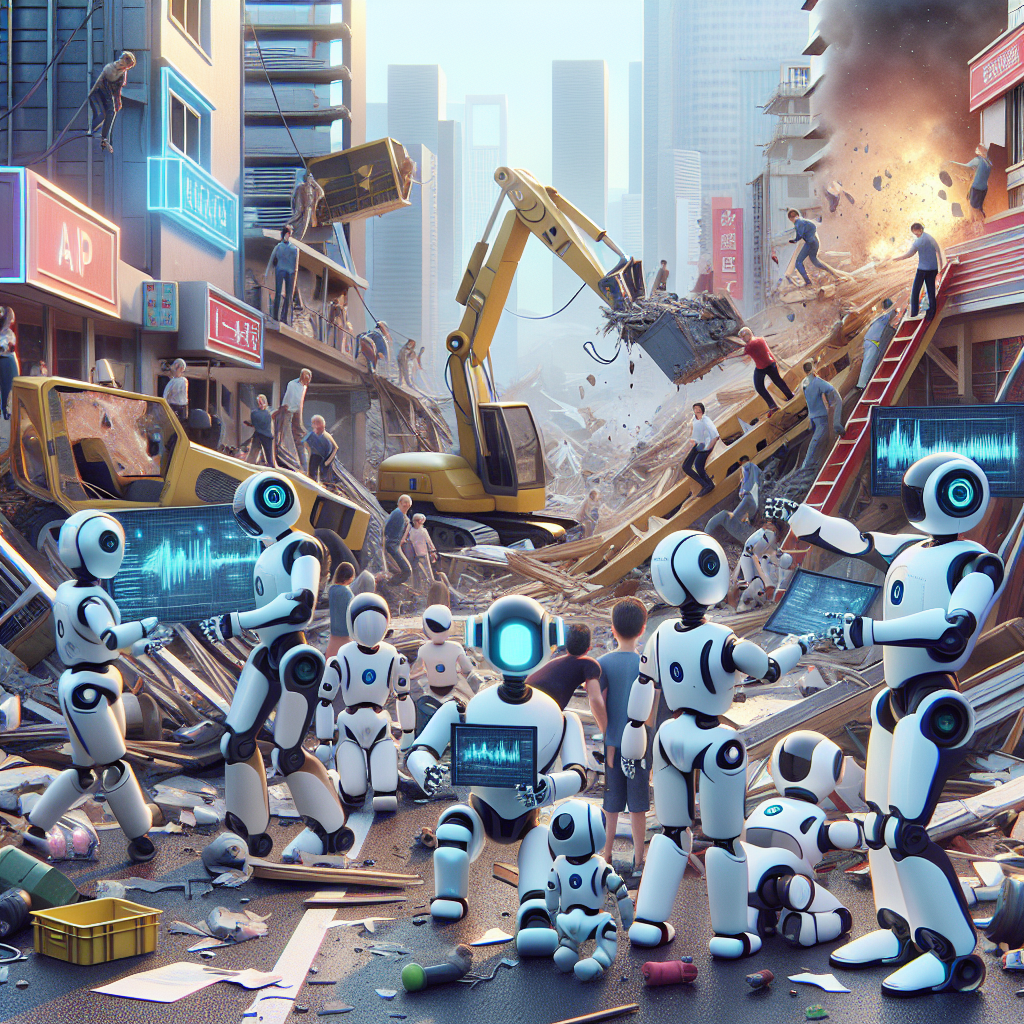In recent years, artificial intelligence (AI) has become an increasingly important tool in disaster response efforts. From predicting natural disasters to coordinating emergency responses, AI consulting plays a crucial role in helping communities prepare for and recover from disasters. In this article, we will explore the role of AI consulting in disaster response and how it is revolutionizing the way we respond to emergencies.
What is AI Consulting in Disaster Response?
AI consulting in disaster response involves the use of artificial intelligence technologies to improve the efficiency and effectiveness of emergency response efforts. This can include using AI algorithms to predict natural disasters, analyze data in real-time to identify areas in need of assistance, and optimize resource allocation during a crisis.
AI consulting firms work with emergency response organizations, government agencies, and non-profit organizations to develop and implement AI solutions that can help mitigate the impact of disasters and save lives. These solutions can range from predictive modeling to autonomous drones that can deliver aid to remote areas.
How Does AI Help in Disaster Response?
AI can help in disaster response in a variety of ways, including:
1. Predictive Modeling: AI algorithms can analyze historical data to predict the likelihood and severity of natural disasters such as hurricanes, earthquakes, and floods. This information can help emergency response organizations prepare for disasters and allocate resources more effectively.
2. Real-Time Data Analysis: During a disaster, AI can analyze real-time data from various sources, such as social media, weather sensors, and satellite imagery, to identify areas in need of assistance and coordinate emergency response efforts.
3. Resource Allocation: AI can optimize the allocation of resources during a disaster by analyzing data on population density, infrastructure damage, and other factors to ensure that aid is delivered to those who need it most.
4. Autonomous Drones: AI-powered drones can be deployed to deliver aid to remote areas that are inaccessible by traditional means. These drones can also be used for search and rescue missions, surveying damage, and assessing the impact of a disaster.
5. Natural Language Processing: AI technologies such as natural language processing can help emergency response organizations analyze and categorize incoming information from various sources, allowing them to respond more quickly and effectively to emergencies.
Overall, AI consulting in disaster response can help save lives, reduce the impact of disasters, and improve the efficiency of emergency response efforts.
Examples of AI Consulting in Disaster Response
There are several examples of how AI consulting firms are using artificial intelligence to improve disaster response efforts around the world. Some of these examples include:
1. Predicting Earthquakes: Researchers at Stanford University have developed an AI algorithm that can analyze seismic data to predict when and where earthquakes are likely to occur. This information can help communities prepare for earthquakes and minimize their impact.
2. Drone Delivery in Puerto Rico: In the aftermath of Hurricane Maria, a team of researchers from the University of Washington used AI-powered drones to deliver aid to remote areas in Puerto Rico that were cut off from traditional supply chains. These drones were able to deliver supplies such as food, water, and medical supplies to communities in need.
3. Flood Prediction in India: The Indian government has partnered with AI consulting firms to develop a system that uses AI algorithms to predict floods in real-time. This system analyzes data from weather sensors, satellite imagery, and social media to provide early warning alerts to communities at risk of flooding.
4. Emergency Response Chatbots: AI-powered chatbots are being used by emergency response organizations to provide information and assistance to people affected by disasters. These chatbots can answer questions, provide updates on the situation, and connect people with the help they need.
Overall, these examples demonstrate how AI consulting is revolutionizing the way we respond to disasters and helping to save lives in the process.
FAQs about AI Consulting in Disaster Response
Q: How can AI predict natural disasters?
A: AI algorithms can analyze historical data on natural disasters, such as weather patterns, seismic activity, and other factors, to predict when and where disasters are likely to occur. This information can help emergency response organizations prepare for disasters and allocate resources more effectively.
Q: How can AI help with resource allocation during a disaster?
A: AI can optimize the allocation of resources during a disaster by analyzing data on population density, infrastructure damage, and other factors to ensure that aid is delivered to those who need it most. This can help emergency response organizations make better-informed decisions and save lives in the process.
Q: What are some challenges of using AI in disaster response?
A: Some challenges of using AI in disaster response include data privacy concerns, ethical considerations, and the need for ongoing maintenance and updates to AI systems. Additionally, there may be limitations in the availability and quality of data needed to train AI algorithms for disaster response.
Q: How can organizations get started with AI consulting in disaster response?
A: Organizations can get started with AI consulting in disaster response by partnering with AI consulting firms that specialize in this area. These firms can help organizations assess their needs, develop AI solutions tailored to their specific requirements, and implement these solutions to improve their disaster response efforts.
In conclusion, AI consulting plays a crucial role in disaster response efforts by helping emergency response organizations predict disasters, analyze real-time data, optimize resource allocation, and improve the efficiency of emergency response efforts. By leveraging the power of artificial intelligence, we can better prepare for disasters, save lives, and build more resilient communities.

